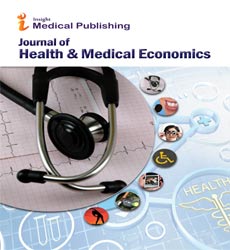Abstract
Assessing the Budget Impact of Mass Spectrometry in Multiple Myeloma: A Health Economic Model from the Spanish Payer Perspective
Context: The International Myeloma Working Group (IMWG) considers mass spectrometry (MS) an appropriate substitute for serum immunofixation electrophoresis (SIFE) in multiple myeloma (MM).
Objective: We evaluated the budget impact from a Spanish payer perspective of using quantitative immunoprecipitation MS (QIP-MS) instead of SIFE to detect M-proteins in MM patients before minimal residual disease (MRD) testing.
Design, setting and participants: An excel-based model compared the testing costs of SIFE versus QIP-MS, a serumbased quantitative immunoprecipitation mass spectrometry (MS) diagnostic test, before bone marrow (BM)-based MRD testing in MM patients over two years.
Intervention: Patients eligible for autologous stem cell transplant (ASCT) had MRD testing three times in year one (following induction therapy, ASCT and consolidation) and once in year two. Patients ineligible for ASCT were tested for MRD once. Only patients with negative M-protein results received MRD tests. Parameter estimates are based on values from a targeted literature review and primary research with hematologists. A sensitivity analysis evaluated the relative importance of input parameters.
Outcome measures and results: Using QIP-MS instead of SIFE prior to MRD testing on 3,400 MM patients in Spain would reduce the number of premature MRD tests by 1,564 and save € 620,304 or € 397 per premature MRD test avoided. Net savings per QIP-MS assay would be € 89. QIPMS’s sensitivity has the greatest impact on savings.
Conclusion: This model suggests that replacing SIFE with QIP-MS prior to MRD testing could be cost saving to the payer and help patients avoid premature invasive BM aspirations.
Author(s): Christian Siegfried*, Miyuru Amarapala, Noemi Puig, Sunil Lakhwani, Miguel-Teodoro Hernández and Lauren Fusfeld
Abstract | Full-Text | PDF
Share this

Google scholar citation report
Citations : 210
Journal of Health & Medical Economics received 210 citations as per google scholar report
Abstracted/Indexed in
- Google Scholar
- China National Knowledge Infrastructure (CNKI)
- WorldCat
- Geneva Foundation for Medical Education and Research
Open Access Journals
- Aquaculture & Veterinary Science
- Chemistry & Chemical Sciences
- Clinical Sciences
- Engineering
- General Science
- Genetics & Molecular Biology
- Health Care & Nursing
- Immunology & Microbiology
- Materials Science
- Mathematics & Physics
- Medical Sciences
- Neurology & Psychiatry
- Oncology & Cancer Science
- Pharmaceutical Sciences

